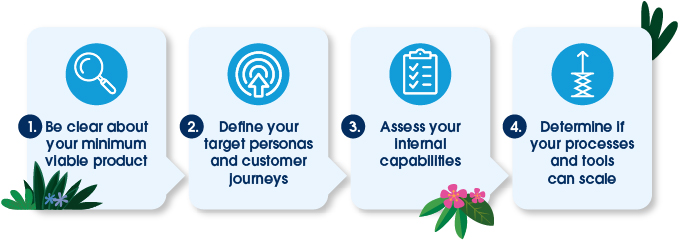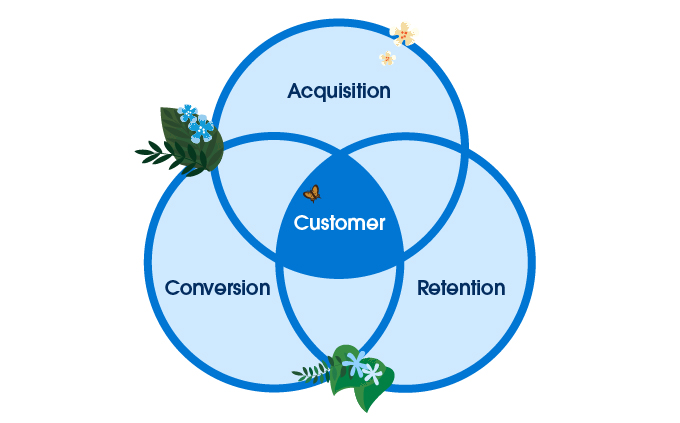COVID-19 has forever changed the way companies do business. It has challenged us to reimagine how we procure, sell, and engage with customers. It has also blurred the line between online and offline commerce. Today’s customers want to be able to shop anywhere—be it through a mobile app or in a physical store. More importantly, they expect seamless, connected experiences across channels and touchpoints. That makes experience-driven commerce more important now than ever.
To delve more into these and other trends shaping the future of commerce, Salesforce recently hosted a webinar, Delivering a Unified Digital Experience in the New Normal. Led by Ankit Vashishtha, Sales Leader for Digital Experience at Salesforce, the discussion featured Ashvin Vellody, Partner, Deloitte India, and Vishal Kapil, CTO at a leading fashion retailer.
Here are a few key takeaways from the session:
1. Get your digital commerce model right
When COVID-19 shut down stores, consumers took to online shopping in an unprecedented way. Deloitte research found that in August 2020, consumers were reporting a positive intent to purchase both essential and discretionary products online. What’s more, almost 37% of total retail spending came through digital channels—6% higher than pre-COVID-19 digital share.
Even when stores open, customers will continue to shop online. So how can your brand build a strong digital connection with customers?
One way is to use a direct-to-consumer model with your own digital shopping platform and social media fulfilment channels. Another way is to sell through online marketplaces and third-party retail platforms. The key is to find the right digital commerce model or combination of models for your brand.

If you’re just embarking on a digital commerce journey, try and be clear about your minimum viable product. For instance, if you’re launching an ecommerce portal, how will you display your offerings? Will they be clickable images? Will they take customers to a product details page or a My Accounts page?
Take some time to also define your target personas and customer journeys from contact to closure, so that key touchpoints are not overlooked. This information will help you organise your back-end and front-end systems to capture the right customer data, and deliver the best experiences at the opportune moments.
The next step is to assess your internal capabilities. Are your data centres geared up to handle the anticipated website traffic? Will your supply chain be able to keep up with online customer demand? Do you have enough resources to meet delivery deadlines?
Finally, determine if your processes and tools can scale up as your digital commerce business grows. Will you need more warehouses? How will you manage the growing volume of customer service requests? How much freedom will your service agents have to refund customers for a product issue?
Thinking through these questions helps you get the basics of digital commerce model right. It also pushes you to clearly articulate, communicate, and agree upon your digital goals. When you do that, you can start to build a truly successful, scalable, and sustainable digital commerce business that keeps customers coming back for more.
2. Develop a keen understanding of what customers want, when, and how
Today, everything starts and ends with the customer. Even business decisions are made from a customer lens to achieve sell-through, manage inventory, and forecast demand.
But what does it mean to be truly customer-centric?
It’s about understanding your customers so well that you can engage with them at the right time with the right product on the right channel. It’s also about delivering those 1-to-1 personalised experiences that customers crave.
There are three key areas where customer-centricity plays out.

- Acquisition – Using relevant and personalised content across the value chain to increase brand awareness, reach, and conversion—both online and offline
- Conversion – Enabling customers to find and purchase what they’re looking for on any channel of their choice
- Retention – Using automation, deep personalisation, and rewards programs to keep customers engaged and coming back for more.
Products such as Salesforce Commerce Cloud can help you maximise impact across all these areas. Whether you’re a B2C or B2B company, Commerce Cloud gives you the tools and information you need to know your customers better, personalise their shopping experiences, and connect them to the right products at the right time.
But customer engagement isn’t complete when a purchase is done. The next challenge is to drive repeat purchases, and turn first-time buyers into brand advocates. With a product like Salesforce Loyalty Management, you can effectively reward customers for their engagement and loyalty across every interaction and touchpoint. The result? Longer-lasting customer relationships that deliver greater value to your business.
3. Make customer experiences seamless with a 360-degree customer view
Today, business is all about elevating the human experience. In fact, 80% of consumers surveyed by Salesforce indicate that the experience a company provides is as important as its products and services.
For those experiences to be exceptional, they need to be consistent (but not repetitive) across physical and digital channels. If you have an ecommerce app that makes shopping intuitive and engaging, that sense of ease should be continued in your physical store while simultaneously making the in-store shopping experience unique. India, as a market, still values physical shopping spaces, so brands cannot ignore that while creating experiences.
Today, customers traverse about nine channels while browsing inventory, seeking advice, and making purchases. At every touchpoint—be it online or offline—they expect a seamless omni-channel experience. That experience can be delivered when organisations set up a customer centric operating model where every team is driven by deep customer insights.
A product like Salesforce Commerce Cloud provides these kinds of insights by unifying all teams around a single source of customer truth. The solution enables smooth data integration across marketing, commerce, service, and more. With this 360-degree shared view of customers’ history, interests, and even challenges, every team can serve up connected experiences that are better tailored to customer needs.



